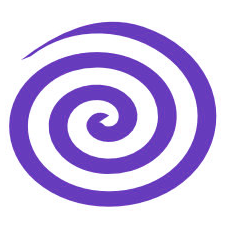In the Spirit of Therapy, August 5, 2014, Eric Greenleaf PhD interviewed by John Lentz for The Milton H. Erickson Foundation Newsletter
Eric Greenleaf, PhD, directs the Milton H. Erickson Institute of the Bay Area, presents internationally, researches Balinese trance, and wrote The Problem of Evil: Ancient Dilemmas and Modern Therapy. Milton Erickson chose Eric to receive the first Milton H. Erickson Award of Scientific Excellence for Writing in Hypnosis.
JL: You are described as someone who is very spiritual. What do you see as the spiritual dimension of psychotherapy?
EG: Three aspects of the relations between spirituality and psychotherapy appeal to me. First is the development of a flexible, humane language to describe experiences at the interface of the visible and invisible worlds. Second is an ability to be present with another person to mysterious aspects of living. Here I speak of birth, development, maturity, sexuality, conscience, grief, death, etc. A third relationship is that between therapy’s concern with interpersonal emotion, and the human problems met with in spiritual practices and communal spiritual life.
JL: How has the spiritual dimension of psychotherapy and life made a difference for you personally?
EG: Erickson’s notion that we have a resourceful unconscious mind, what D.T. Suzuki calls ” No-mind,” is a mysterious, reliable something I’ve experienced: at the death of my best friend years ago; when I was struck by a speeding car while a pedestrian, and; in successful preparation for cancer treatment and open heart surgery as a patient. At these times I’ve been visited by a sense of clarity and attentiveness, an absence of fear, and a wash of strong emotion. It’s Buddhist spirituality with passionate feeling. I’ve described it in my book, in a chapter called, ” On the Social Nature of the Unconscious Mind.”
In therapy, I’ve wanted to utilize spiritual conceptions to communicate with people in their own language of experience, another gift from Erickson. I’ve worked with survivors of alien abduction and survivors of therapeutic cults, as well as the survivors of incest and cruelty. Their endurance seems to me to be poised, like that of the Balinese trance healers, between the visible and invisible worlds. The most ancient spiritual traditions express these experiences in oral poetry, ritual drama and dreams.
JL: Your thoughts reflect a person who very much respects life and the connection that spirituality offers. You clearly also draw on that connection to assist others as well as yourself. How does that reinforce your marriage and other significant relationships?
EG: Carl Whitaker once said that “ Marriage is the Big Leagues of relationship.” Having been called up to the Bigs for the second time, 20 years ago [after being up for a “cup of coffee” the first time], I’ve perhaps gained in my appreciation of love even as the edge comes off my fastball. It is mostly the tolerance and tenderness of others that has saved me from being a wretch, and most patients have been very kind to me as well. My understanding leans to the interpersonal, not the intrapsychic, and the invisible influence of relationship is powerful in the unconscious mind. Whitaker also said, “Don’t tell Freud, but with three generations of a family in the same room, the unconscious is not so unconscious.”
JL: You have spent time visiting and studying the Balinese trance healers, and community trance ceremonies. Have you gotten some great insider tips that translate to other religious and cultural practices”
EG: My experiences in Bali, a Hindu-Buddhist culture which extensively and naturally employs trance in healing, resolving family conflict, community activities and relations with the gods, have been a practice for my understanding, and for wonder. Since dreams, as Jung wrote, are “the reality of the psyche,” I treat all descriptions of experience as a sort of dream reflecting our reality, our “mind”. I don’t privilege any one view of reality. Rather, I want to know how compassionate or humane the persons are who live in that way. As always, some are caring; others horrid, sometimes with the same set of ” spiritual beliefs”. The tip is, as Sullivan put it, that “We are all more human than otherwise.” In Bali, among the most spiritually powerful trancers, one is a king, one works laying bricks. One famous shadow puppet master beats his children. One of his sons is thoughtlessly kind.
JL: What would you want people most to know about you and your spirituality?
EG: I’m an ordinary man with a gift for poetry. I like very much the Zen Buddhist way with a story, and Buddhism seems to me, intuitively, a true way of understanding things. This poem pleases me: “Potato leaves on incinerated ground. I awaited tiptoe the rise of the moon.”
JL: You may be an ordinary man. You also have some not-so-ordinary wisdom. For instance, the power your subtle metaphors pack is incredible. Your Wild HorseTrance sounds deceptively casual, yet it is a brilliant use of metaphors that invites a powerful trance, and does so in a very respectful, spiritual way. What are you learning about at this point that excites you?
EG: Thank you for appreciating my work. I hope it has helped people. I’m learning that neuroscience findings about spindle cells confirm Erickson’s intuitions about the unconscious mind. Spindle cells map on the same cell an odd collection of experiences: the social emotions, bodily sensations, surprise and the problematic. These match Erickson’s hypnotic methods.
Also of interest, some people have been helped by visions and voices. I know a Balinese psychiatrist who was taught healing by the gods, and an American therapist taught by celestial visitors. People are remarkable. As Portman said, the psyche is “something on the one hand mathematically abstract and on the other hand fabulous and mythological.”
